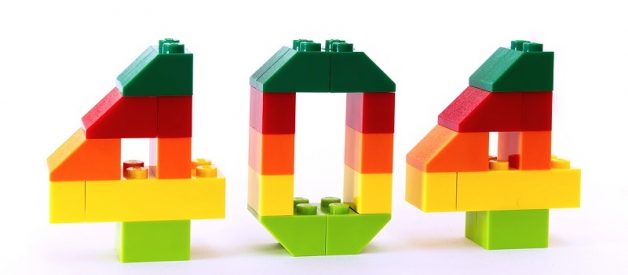Many people want to become game designers, but very few fully understand what kind of profession it is. A game designer is a person whose job is to see what the game is going to look like even before the start of the developing process. Many of us can come up with some kind of idea. But a game designer has to understand how to make an idea into reality, taking into account technical possibilities and highlighting those features, which interest the player. The game and all of its components have to meet the requirements presented by the market. And game designer should know exactly what makes his game captivating and see its strong and weak sides.
Unfortunately, most game designers make a lot of typical mistakes while developing their project or submitting it to the publisher. Some of these mistakes lie at the intersection of creative areas of activity and management, and therefore not seen by the designer himself.
The main purpose of this article is to show the most common mistakes made by beginners in game design and hopefully caution you from making them yourself.
Mistake # 1: Too many features
Even before writing a game design document, the important task is to highlight the main features of the game, which will attract future buyers. You need to know exactly why people will want to play your game and concentrate all of your attention on these features.
Many beginners start to fill the feature lists with completely unnecessary elements, adding to the game something that is never going to be used by the player. It is true, that some features look very attractive on the paper. But make sure that they are necessary and not only waste the resources. It is better to abandon the excess and thus save time on fine-tuning the main elements.

Keep the gameplay simple
Mistake #2: Waste of time and resources
Every self-respected game designer always knows what a “great game” should look like and has a bunch of genius ideas. But do not forget about the fact that not all ideas can be turned into a reality. Before starting the whole process of game development, you need to study all technical capabilities, team capabilities and available technologies. Do not start the project, which will be impossible to complete in the future. It will only result in wasting time and an excessive amount of resources. In order not to make this mistake, you have to closely work with the leading specialists of the project (programmers, designers, artists, project manager) at the stage of pre-production.
Mistake #3: A game for everyone is a game for no one
It is very important to determine the target audience and the genre of your game on the very first stages of the development process. Game design and features should be aligned with the needs of the target audience. Strict following a particular direction will protect you from a lot of mistakes in the future. Select the main elements of the chosen genre and make sure they are all present in the game. For example, when creating RTS, use classic approaches (interface and “build-allocate-send” mechanics). Play as many games as possible, use successful finds of other projects and avoid their mistakes.
Remember no one is interested in a product created for everyone. A quest lover will never play puzzle games with riddles. And even though there are several good examples of a mix of genres in the history of game design, do not abuse breaking the established laws. You might scare away the target audience.
Also do not create a game just for yourself, because you may end up being the only player. Do not forget the fact, that you are creating a game for a certain audience. It is very useful to conduct so-called play-tests in order to identify shortcomings. You don’t have to organize full-scale events, sometimes just a couple of people from another team is totally enough.

Determine the game genre
Mistake #4: Unclear message to a production team
The main problem which appears on the production stage is an unclear explanation to the production team (programmers and artists) what to do and how everything should look. Use a game design document for the purpose of describing the concept to other team members.
The game design document for the artists has to accurately describe what you want to see in a game. If possible attach a sketch. If there is a real object, use photos or drawings, as well as the information about the object (overall dimensions).
Writing a game design document for programmers is a more difficult task. It requires an exact, logically correct statement of the problem, preferably in the language of formulas. Try to explain why a certain task is being done. Also, write down all your comments and valuable instructions.
Mistake #5: Realism vs. gameplay
It is believed that players love realistic games and the better the game simulates the real world, the more interested the audience is. With graphics, in this regard, everything is clear: the goal is to create more beautiful and realistic image without forgetting about the performance. But functional realism and gameplay is always a compromise. And this compromise is not that simple since a realistic game is not always interesting and playable. Sometimes in order to play the game, the user has to have specific knowledge (for example the difference between specific types of weapon) and the lack of this knowledge is depriving him of an opportunity to try your product.

Make sure users understand how to play the game
Mistake #6: Bad communication with the player
The game mechanics should be intuitive and easily understandable to the player: how everything works, how the main character is able to receive a level-up or what to do next to advance the storyline. What a game designer sees as obvious is not always clear to others. It is necessary to communicate to the user and have teaching missions. If all the sudden you decide to let the player do something that was not possible before, be sure to tell him about it. The use of incomprehensible, unobvious patterns and events should always be explained.
Mistake #7: Underestimating the nonlinear game storyline
Nonlinearity is a very attractive feature of the game. Users enjoy the fact that their actions influence what will happen next. This enhances the replayability of your product.
At the same time, nonlinear games carry a lot of difficulties: more voluminous game content, a nonlinear scenario, the need for special gameplay mechanisms. All of this must be taken into account before you give the freedom of choice to your audience. Be aware that testing nonlinear game is an extremely difficult task. To check all the possible situations, you will have to make huge story sheets with all the scenario twists and use it when testing the game.

Be careful with nonlinear game storyline


